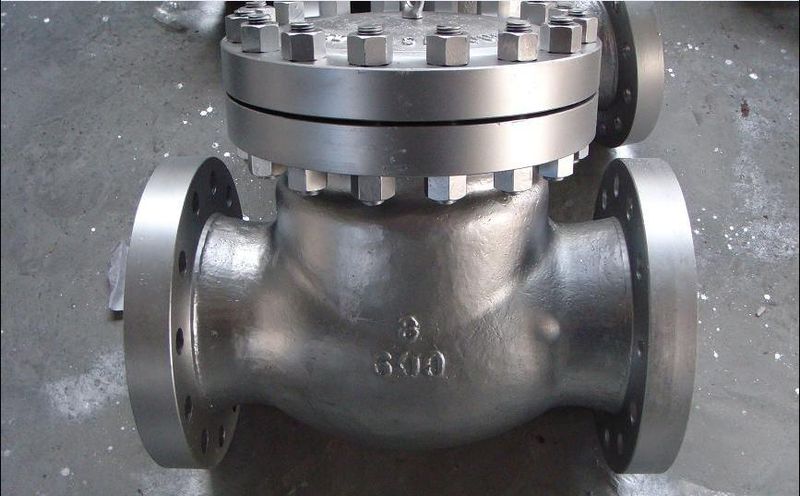In mechanical engineering, almost every metal part or alloy is subjected to harsh conditions like moisture, high temperatures, salt spray, and much more. These conditions may also lead to corrosion or other forms of metal degradation.
So, how do these metal parts or alloys endure this tough punishment? The short answer is- surface finishing. Out of many metal finishing techniques, Passivation is commonly used in particular applications.
Wondering what metal passivation is and how it can protect your metal parts? Don’t fret. Because, in this article, we are going to talk about metal passivation in detail.
What is Passivation?
Metal passivation is a chemical process where a protective layer, usually an oxide or nitride, is formed on the surface of a metal. This layer acts as a barrier, preventing the underlying metal from reacting with its environment.
This technique is commonly used in industries where metals are exposed to corrosive environments, such as in manufacturing, construction, and marine applications.
Process of Passivation
The passivation process follows a number of steps, starting from cleaning to drying; let us discuss all of the steps:
Cleaning
The process kicks off with cleaning of the metal surface, using alkaline cleaners or solvents to eradicate any traces of dirt, grease, or oil.
Acid Treatment
Following cleaning, the metal is submerged in a solution containing either nitric acid or citric acid.

This step serves the dual purpose of removing impurities and initiating the formation of the protective oxide layer.
Passivation Bath
The metal is immersed in the acid solution for a specific duration, typically ranging from several minutes to an hour. During this time, the acid reacts with the surface, effectively stripping away any free iron and contaminants present.
Rinsing
Post-acid treatment, the metal undergoes a thorough rinsing process with water to ensure the complete removal of any residual acid and soluble salts that may remain on the surface.
Drying
Once rinsed, the metal is carefully dried to eliminate any lingering moisture. This step is vital to prevent the formation of water spots or stains on the passivated surface.
Inspection
Finally, the passivated surface undergoes a detailed visual inspection and possibly testing to ensure that it meets specified standards and exhibits the desired corrosion-resistant properties.
Types of Passivation on Stainless Steel
Now the question is, what kind of passivation is done for the steels? Understand that Passivation is a crucial process in steel treatment that encompasses various methods to enhance its corrosion resistance and durability. Among the most prevalent are:
Nitric Acid Passivation
It includes immersing steel in a nitric acid solution, which is a widely practised method. This process effectively removes contaminants and fosters the development of a passive oxide layer on the surface, significantly boosting corrosion resistance.
Nitric Acid with Sodium Dichromate
This is done by Incorporating sodium dichromate into the nitric acid solution, elevating the protection against corrosion. This synergistic approach enhances the passivation process, fortifying the passive layer and augmenting the steel’s longevity, especially in harsh environments.
Citric Acid Passivation
Recognized for its environmental compatibility, citric acid passivation offers an eco-friendly alternative to nitric acid. It achieves efficient passivation by effectively eliminating contaminants. This method not only ensures robust corrosion resistance but also minimizes ecological impact, aligning with sustainability goals.
Why is Metal Passivation Important?
After the metal passivation process, a metal or alloy possesses some features such as:
Enhanced Corrosion Resistance
As mentioned, a protective layer of oxide, or nitride, is formed on the metal surface in this process. The key mechanism behind the corrosion resistance provided by passivation lies in the stability and integrity of this oxide film.

When the metal surface is exposed to oxygen, chromium atoms within the stainless steel react with oxygen molecules to form a stable chromium oxide layer. This layer adheres tightly to the underlying metal surface, forming a barrier that prevents further oxidation or corrosion of the metal.
Improved Cleanability
Passivation smoothes out the surface of metal parts, making them easier to clean and maintain. This is particularly advantageous in industries such as food processing, pharmaceuticals, and healthcare, where cleanliness is critical. The smoother surface reduces the likelihood of contaminants adhering to the metal, ensuring a higher level of hygiene and facilitating more efficient cleaning processes.
Retention of Aesthetic Appearance
Passivation helps maintain the aesthetic appeal of metal surfaces by preventing discolouration, staining, or rusting. This is especially important in applications where visual appearance matters, such as architectural structures, consumer goods, and luxury items. The protective layer formed through passivation preserves the original finish of the metal, ensuring it remains visually appealing over time.
Friction Reduction
It can reduce friction and wear on metal surfaces by creating a smoother, more uniform finish. In applications such as industrial machinery, this can translate to lower energy consumption, decreased mechanical wear, and extended maintenance intervals. Passivation-induced friction reduction also contributes to quieter operation and smoother performance of moving parts.
Enhanced Biocompatibility
This technique is crucial for ensuring the biocompatibility of metal implants and instruments. Passivation reduces the risk of adverse reactions or infections when these devices come into contact with biological tissues.

This minimises the potential for complications associated with medical procedures. That is why this technique is used for medical equipment, too.
Wrapping Up
In conclusion, metal passivation is an essential process in mechanical engineering that significantly enhances the durability and performance of metal parts and alloys exposed to harsh environments. This makes it an indispensable technique in industries ranging from manufacturing and construction to healthcare and marine applications. While making a decision on passivation type, it is crucial to consider your application and requirements. Most of all, consult reliable metal finishing service providers like Dainsta.
Need Metal Passivation Services for High-Performance Parts?
Get in touch with Dainsta.
